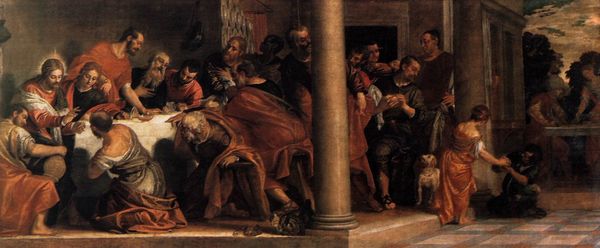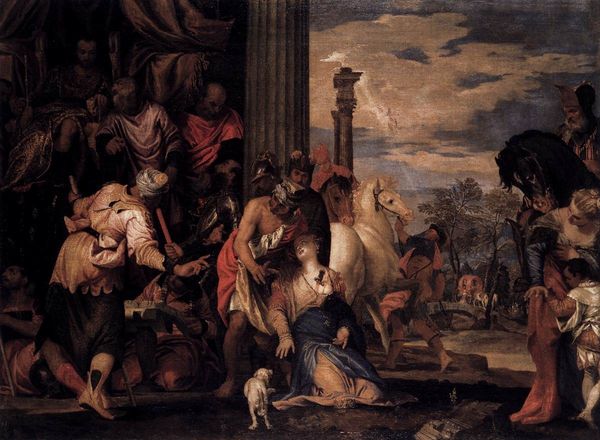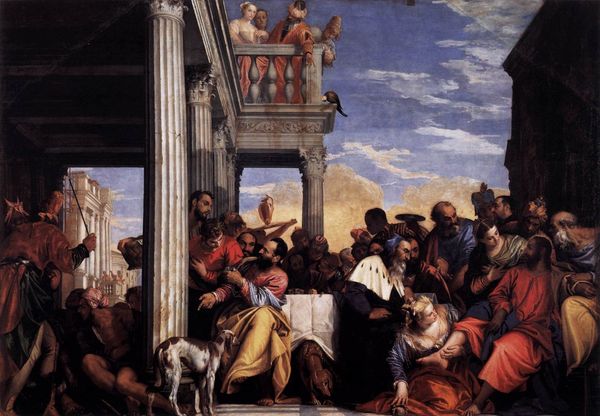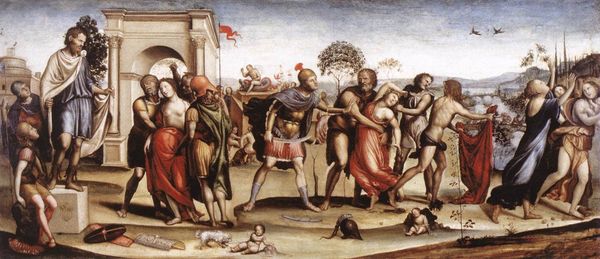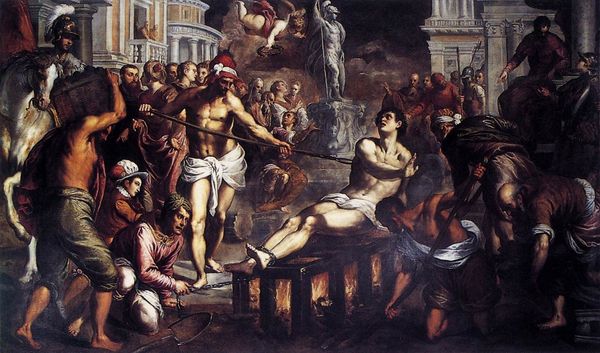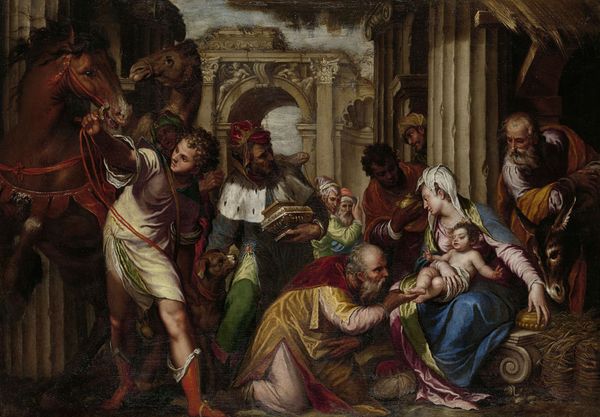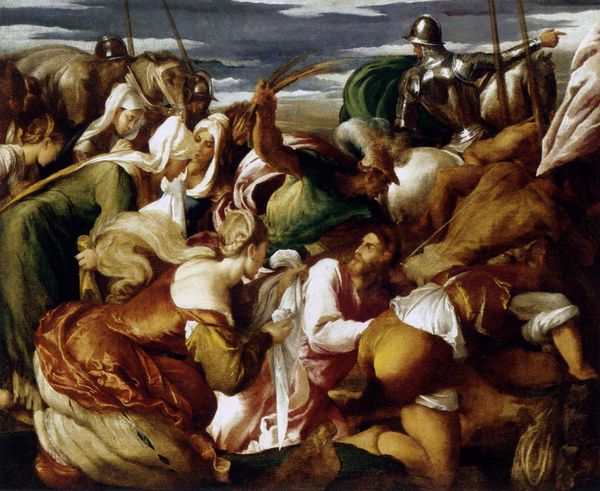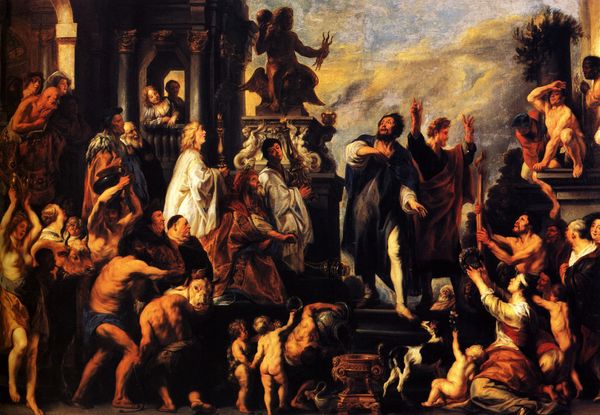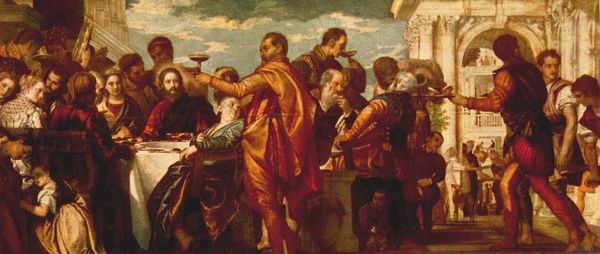
painting, oil-paint
#
high-renaissance
#
venetian-painting
#
narrative-art
#
painting
#
oil-paint
#
figuration
#
oil painting
#
christianity
#
history-painting
Dimensions: 355 x 540 cm
Copyright: Public domain
Curator: This is Paolo Veronese’s “Martyrdom of Saint Sebastian,” painted around 1565. Veronese, of course, was a leading figure in the Venetian High Renaissance. Editor: It’s immediately striking. The painting pulsates with a kind of violent energy, doesn't it? The composition is almost overwhelmingly dense, filled with figures in motion. Curator: Precisely. It reflects the theatricality that was very much in vogue, part of a broader cultural investment in dramatic spectacle. Note how Veronese uses color, especially the reds and whites, to guide the eye across this chaotic scene. It invites you into the spectacle of the martyrdom. Editor: And yet, I find myself troubled by the celebration of such explicit violence. The suffering of Sebastian is on full display, and we, the viewers, become complicit in the gaze. It's difficult to reconcile the beauty of the painting with the brutality it depicts. It almost glorifies oppression, doesn't it? Curator: I see your point, but one must remember that these religious paintings served as didactic tools. They reinforced religious beliefs and social order, for a public accustomed to the era’s violence in ways quite foreign to us. Art and religion served very specific societal roles at the time. The work served as a tool in reinforcing the position of power for institutions in charge. Editor: But hasn't art always been political, whether consciously or unconsciously? This work naturalizes a worldview, placing certain bodies in positions of power, and others in subjection. Shouldn't we be critical of how these power dynamics are represented? Also I’m wondering if this wasn’t a cry for social change camouflaged as a piece of Christian art? Curator: Perhaps both are true, a powerful visual statement on power relations rooted in Veronese's context. Thank you. Editor: Yes, by grappling with the complexities we bring a fresh understanding to the work of Veronese and challenge the long held narratives in art history.
Comments
No comments
Be the first to comment and join the conversation on the ultimate creative platform.
